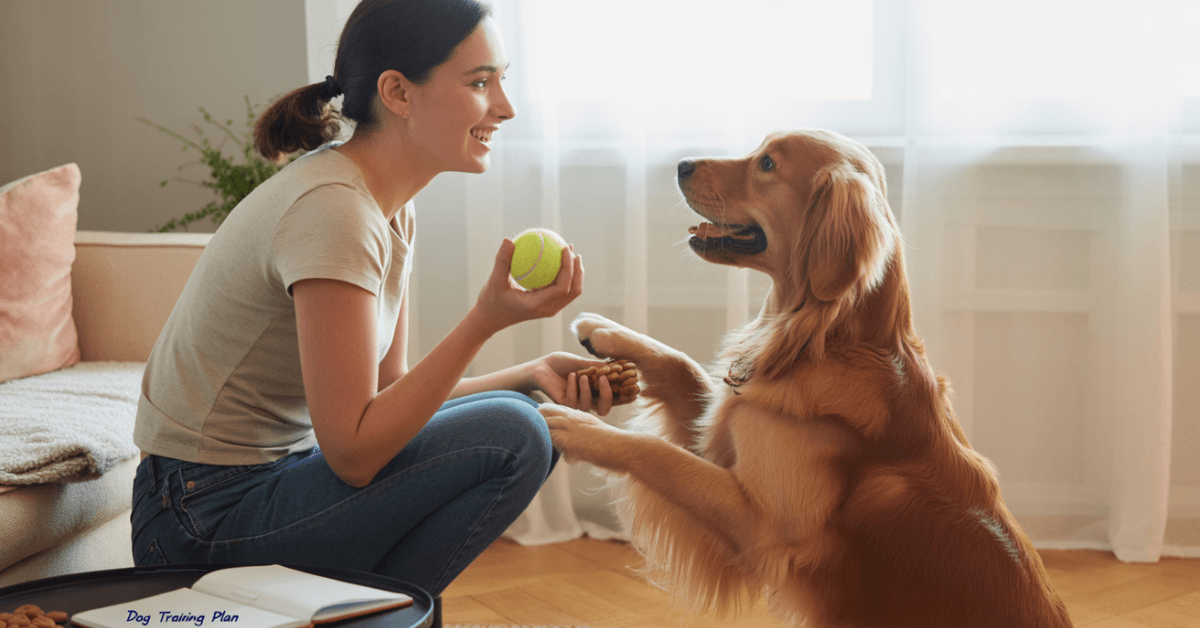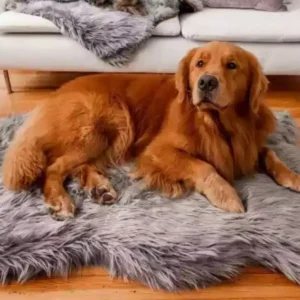Training your dog doesn’t have to be expensive. You can teach your pet new tricks without spending a lot. Affordable dog training methods are both cheap and effective in making your pet well-behaved.
Online dog training courses are a hit with many pet owners. They offer positive reinforcement training methods at a low cost. Now, you can find lots of training resources without spending a lot.
This article will show you 20 cost-effective pet training tips that are easy on your wallet. We’ll cover simple exercises to complex commands. You’ll learn science-backed techniques to better your dog’s behavior.
Key Takeaways
- Discover affordable dog training methods that fit your budget
- Learn cost-effective pet training tips to improve your dog’s behavior
- Explore science-backed techniques for effective dog training
- Access online resources for positive reinforcement training
- Improve your dog’s behavior without breaking the bank
The Science Behind Effective Dog Training on a Budget
To train your dog without spending a lot, understanding positive reinforcement is key. This method rewards good behaviour rather than punishing bad behaviour. It’s kind and works well.
Understanding Positive Reinforcement Psychology
Positive reinforcement training employs a straightforward concept. It says that if you reward a behavior, it will happen more often. This method helps your dog learn good habits and strengthens your bond.
How Dogs Learn Through Consequences
Dogs learn from what happens after they act. If they get a treat or praise for a behavior, they’ll do it again. But if they don’t get anything good, they might stop doing it.

The Role of Timing in Reinforcement
Timing is very important in training. You should give the reward right after the good behavior. If you wait too long, your dog might get confused and learn less.
Karen Pryor, a big name in positive reinforcement, once said,
“The most important thing in training is to understand that the animal is always right, and if there’s a problem, it’s usually the trainer’s fault.”
This quote shows how important it is to get your dog’s learning process.
| Key Elements | Description | Benefits |
|---|---|---|
| Positive Reinforcement | Rewarding desired behaviors | Creates a clear association, enhances learning |
| Consequences | Outcomes following a behavior | Encourages good behavior, strengthens the bond |
| Timing | An immediate reward after the desired behavior | Immediate reward after the desired behavior |
Essential Low-Cost Training Tools Every Dog Owner Should Have

Low-cost training tools are a big help for dog owners who don’t want to spend a lot. You can teach your dog well without breaking the bank. The trick is to find the right tools that are both cheap and work well.
Let’s check out some DIY training clickers and markers you can make at home.
DIY Training Clickers and Markers
You can make your own training clickers from things you have at home. For example, a pen that clicks or a small metal washer on a ring can work. Here’s how to make a DIY clicker:
- Find a pen with a clicking mechanism.
- Use a metal washer or a small bell as a marker.
- Practice using your DIY clicker to mark good behavior.
Now, let’s talk about affordable treat pouches and rewards that won’t cost a lot.
Affordable Treat Pouches and Reward Options
Treat pouches are key for rewarding your dog during training. You don’t have to spend a lot on them. Here are some ideas:
- Use a small pouch or bag you already have at home.
- Look for cheap treat pouches online or in pet stores.
- Make your treat pouch from fabric or plastic.
Lastly, let’s look at some household items that can be used for training.
Household Items That Double as Training Tools
Many household items can be used for dog training. Here are a few examples:
- Use a cardboard box as a makeshift obstacle.
- Turn a broom handle into a target stick.
- Use a towel or cloth as a tug toy.
By using these low-cost tools, you can train your dog well without spending too much.
Budget-Friendly Dog Training Techniques Under 50 Dollars

Training your dog doesn’t have to cost a lot. There are many effective ways to do it for under $50. With the right approach, you can see big improvements without spending a lot on dog training.
Technique 1: Clicker Training Fundamentals
Clicker training uses a small device to make a clicking sound. It marks good behaviors. This method is based on positive reinforcement and works well.
Getting Started for Under $5
You can start with a simple, cheap clicker for under $5. The trick is to teach your dog that the sound means a treat is coming.
Charging the Clicker
“Charging” the clicker means teaching your dog that the sound means a treat. Click the device and give a treat right away. Do this several times.
Technique 2: Target Stick Training
Target stick training uses a stick or object to guide your dog. It’s great for teaching complex actions or movements.
Making Your Target Stick
You can make a target at home. Use a simple stick or dowel and add a small ball or object to the end. This makes it fun for your dog.
Teaching Basic Targeting Behaviors
The goal is to teach your dog to touch the target stick with their nose or paw. Reward them for touching it. Then, make the actions more complex over time.
Using these budget-friendly techniques, you can have a well-behaved dog. You won’t need to spend a lot on professional training services.
Teaching Basic Commands Without Breaking the Bank

Basic obedience commands are key for a well-behaved dog. You can teach them without spending a lot. Training your dog improves their behavior and strengthens your bond.
Technique 3: The “Sit” Command
Teaching your dog to “sit” is a basic command. Hold a treat near their nose, then move it up and back. This will make them sit down.
When they sit, say “Sit” and give them the treat. Do this many times until they learn the command.
Tips for Success:
- Be patient and consistent.
- Use positive reinforcement like treats and praise.
- Practice in different locations to help your dog generalise the command.
Technique 4: The “Stay” Command
The “stay” command is important for control. Start with your dog sitting, then take steps back while saying “Stay.” Reward them with a treat and praise if they stay.
Common Challenges:
- If your dog breaks the “stay” command, go back to the beginning and try again.
- Increase the distance and duration gradually.
Technique 5: The “Come” Command
Teaching your dog to “come” is crucial for their safety. Start in a quiet area with few distractions. Call your dog by their name and say “Come” while stepping back. Reward them with treats and affection when they come.
Tips for Effective Recall:
- Use a happy, upbeat tone when calling your dog.
- Avoid scolding or punishing your dog when they comes to you, as this can create negative associations.
- Gradually increase the distance and distractions.
Cost-Effective Solutions for Common Behavior Problems

Many dog owners face common issues like barking too much, jumping on people, and pulling on the leash. But, you can change your dog’s behavior without spending a lot. The right techniques can help you do this.
Technique 6: Addressing Excessive Barking
Excessive barking can be fixed with positive reinforcement training. Teach your dog the “quiet” command. Say “quiet” and hold a treat near their nose. When they stop barking, give them the treat and praise.
Also, desensitize your dog to triggers that make them bark. Start by exposing them to these triggers at a low level. Reward them for staying calm.
Technique 7: Preventing Jumping on People
To stop your dog from jumping, teach them to do something else instead. Ignore them when they jump up. Then, give them attention or treats when they calm down. Being consistent is important.
Teach your dog to sit on command instead of jumping. This way, you can stop them from jumping and teach a better behavior.
Technique 8: Reducing Leash Pulling
Leash pulling can be lessened with positive reinforcement techniques and the right gear. Use a comfortable harness instead of a collar. This can make walking more comfortable and reduce pulling.
Practice walking without pulling by rewarding your dog for walking beside you. If they pull, stop moving. When they come back, reward them and keep walking. This teaches them that pulling doesn’t get them there faster.
DIY Dog Training Games and Activities
DIY dog training games are fun and great for your dog’s mind. They help improve behavior, strengthen your bond, and keep them active. Here are some creative, budget-friendly games and activities you can do at home.

Technique 9: Homemade Obstacle Courses
Building a homemade obstacle course is a fun challenge for your dog. Use items from your home to create a course with tunnels, jumps, and weave poles.
Using Household Items Safely
Make sure the items in your obstacle course are safe and sturdy. Don’t use anything that could hurt your dog if they fall or hit it.
Progressive Training Challenges
As your dog gets better, add more obstacles or change the course layout. You can also time their runs to make it harder.
Technique 10: Hide and Seek for Recall Training
Hide and seek is a fun game that helps with recall training. By hiding and calling your dog, you improve their recall skills.
- Start by hiding in easy-to-find spots.
- Make it harder by hiding in spots that are harder to reach.
- Give treats and praise when they find you.
Technique 11: DIY Puzzle Toys for Mental Stimulation
DIY puzzle toys are great for keeping your dog’s mind active. You can make simple toys using cardboard boxes and plastic containers.
| Material | Puzzle Toy Idea |
|---|---|
| Cardboard Box | Cut holes of different sizes for your dog to get treats out. |
| Plastic Container | Cut a small hole and fill with treats; your dog must figure out how to get them out. |
By adding these DIY games and activities to your routine, you can keep your dog happy and active.
Free and Low-Cost Training Resources
Looking for ways to train your dog without spending a lot? There are many free and low-cost training resources out there. These can be a big help for those on a tight budget, offering great training methods at a low cost.
Utilizing Public Library Resources
Your local library is a goldmine for dog training info. They have books, DVDs, and online courses you can get for free with your library card. You’ll find everything from beginner guides to advanced training tips. Take advantage of these resources to improve your training skills without spending a penny.
Free Online Training Videos and Communities
The internet is full of free online training videos and communities for dog training. YouTube has many dog training channels with helpful tips and techniques. Online forums and social media groups are also great for connecting with other dog owners, asking questions, and sharing experiences. These communities are a big help for getting support and advice on dog training.
Community Training Groups and Meetups
Another great way to get low-cost training is by joining community training groups and meetups. Many communities have dog training groups that hold regular meetups, training sessions, and workshops. These groups offer training and a chance to socialize your dog. They also help you connect with other dog owners. Look for local dog parks, pet stores, or community centers that host these groups.
By using these free and low-cost training resources, you can give your dog a great training experience without breaking the bank. Whether it’s through libraries, online communities, or local groups, there are plenty of options to support your dog training journey.
Advanced Training Techniques on a Shoestring Budget
Advanced training for dogs doesn’t have to cost a lot. With a bit of creativity, you can teach your dog new skills without spending a lot.
Technique 15: Scent Work Training
Scent work is fun and challenging for dogs. It uses their natural sense of smell for mental and physical exercise.
Setting Up Scent Stations at Home
To begin scent work, set up stations around your house. Use essential oils or scent articles for the scent. Start by letting your dog get to know the scent and follow it.
Progressing to More Complex Searches
When your dog gets better at following scents, make the searches harder. Hide the scent in tough spots or use different scents to test them.
Technique 16: Basic Agility Training at Home
Agility training is another advanced skill you can do at home. Use items from your house to make a simple course. This will help your dog stay fit and improve their coordination.
Make a course with tunnels, jumps, and weave poles. Guide your dog through it, rewarding them for each part they complete.
Technique 17: Trick Training for Mental Stimulation
Teaching tricks is great for your dog’s mind. It keeps them sharp and strengthens your bond.
Begin with easy tricks like “shake” or “roll over.” Then, move to harder ones. Use treats and praise to help them learn.
Creating a Consistent Training Schedule That Costs Nothing
Creating a consistent training schedule for your dog can be free. It’s important to involve the whole family. This way, you can make progress without spending extra money.
Technique 18: Integrating Training Into Daily Routines
You can easily add dog training to your daily life. For example, before meals, have your dog sit or stay. This practice reinforces good behavior and doesn’t cost anything.
Here are some ways to add training to your day:
- Use mealtime to practice “sit” and “stay”
- Include short training sessions during walks
- Use household chores to practice obedience
Technique 19: The “Nothing in Life is Free” Method
The “Nothing in Life is Free” method means your dog must do something before getting what they want. This could be food, attention, or going outside. It helps keep training consistent and encourages good behavior.
| Action | Command/Task | Reward |
|---|---|---|
| Before Meals | Sit or Stay | Food |
| Before Walks | Basic Obedience | Going Outside |
| Before Attention | Perform a Trick | Praise and Affection |
Technique 20: Consistency Training Across Family Members
All family members must agree on training. This means everyone should know the commands, rewards, and training style. This way, your dog learns what’s expected of them.
Getting everyone involved in training makes it fun and strengthens your bond with your dog. It also improves their behavior.
🐾 Transform Your Dog’s Behavior—Without Breaking the Bank!
✨ Smart, Gentle, and Budget-Friendly Training That Works
🐶 Train Smarter on a Budget!
Unlock your dog’s hidden intelligence and fix behavior issues fast with Brain Training for Dogs—fun, science-backed, and affordable!
👉 Click here to get started for just $67!
✅ Key Highlights of the Product (Bullet Format):
- 🧠 Boosts Dog Intelligence: Uses brain games to build obedience and eliminate bad habits.
- 🐾 Force-Free Training: Kind, science-based methods—no harsh corrections or dominance tactics.
- 🎓 Easy, Step-by-Step Lessons: 21+ interactive games with video demos and troubleshooting tips.
- 🐕 Solves Real Problems: Cures barking, leash pulling, chewing, anxiety, and more.
- 💬 Expert Support & Private Forum: Direct access to Adrienne and a helpful dog-loving community.
- 📱 Instant Access, Mobile Friendly: Train anytime, anywhere—even on a tight schedule.
- 💸 Just $67 – Risk-Free: Lifetime access + 60-day money-back guarantee.
- 🎁 Bonus Included: FREE “Behavior Training for Dogs” course.
✨ Affordable, effective, and fun—transform your dog’s behavior today!
👉 Start Now with Brain Training for Dogs!
Conclusion: Effective Dog Training Doesn’t Have to Be Expensive
You’ve learned that you don’t have to spend a lot to train your dog well. Using budget-friendly methods, you can have a well-behaved pet without spending too much.
Positive reinforcement and DIY tools are great for training dogs. These methods are affordable and can solve common problems and teach basic commands.
Adding affordable training to your daily routine can strengthen your bond with your pet. It’s not only cost-effective but also good for your dog’s mind and body.
With the 20 proven techniques from this article, you can train your dog without breaking the bank. Start using these methods today for a better relationship with your pet.
FAQ
What is positive reinforcement training, and how does it work?
Positive reinforcement training rewards good behavior instead of punishing bad ones. It links a behavior with a reward, like treats or praise. This encourages the dog to do it again.
How can I create a DIY training clicker?
Make a DIY training clicker with a metal pen or small metal object. It should make a clear sound when clicked. You can also use a clicker app on your phone.
What are some affordable treat pouches and reward options?
Affordable treat pouches include fanny packs, small containers, or plastic bags. Good rewards are small pieces of cooked chicken, carrots, or green beans.
How do I implement clicker training and target stick training?
Start by linking the clicker sound with a treat. Then, use it to mark good behaviors. For target stick training, guide your dog’s nose or paw to a target with a stick. Reward them with a treat.
What are some common behavior problems, and how can I address them on a budget?
Common problems include barking, jumping, and leash pulling. Use cost-effective solutions like redirecting attention and positive reinforcement training. Practice consistently to solve these issues.
How can I create a homemade obstacle course for my dog?
Use household items to make a course. Create tunnels from cardboard boxes, jump from broomsticks, and weave poles from PVC pipes.
What are some free and low-cost training resources available?
Free and low-cost resources include public library materials, online videos, and community groups. Online forums are also great for connecting with other dog owners and trainers.
How can I create a consistent training schedule that involves all family members?
Find a routine that works for everyone. Practice training at the same time daily. Involve all family members to ensure consistency.
Can I do advanced training techniques on a shoestring budget?
Yes, you can do advanced training on a low budget. Use household items for scent work, agility, and tricks.
Are budget-friendly dog training techniques effective?
Yes, budget-friendly techniques are effective when done right. Positive reinforcement training, in particular, is backed by science and works well.




